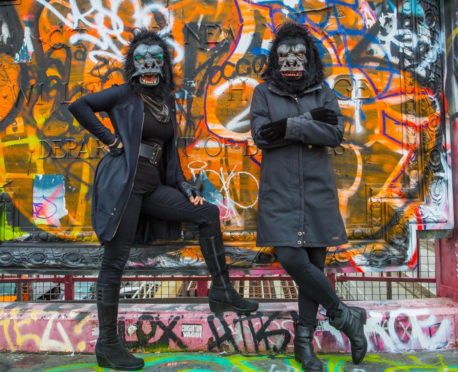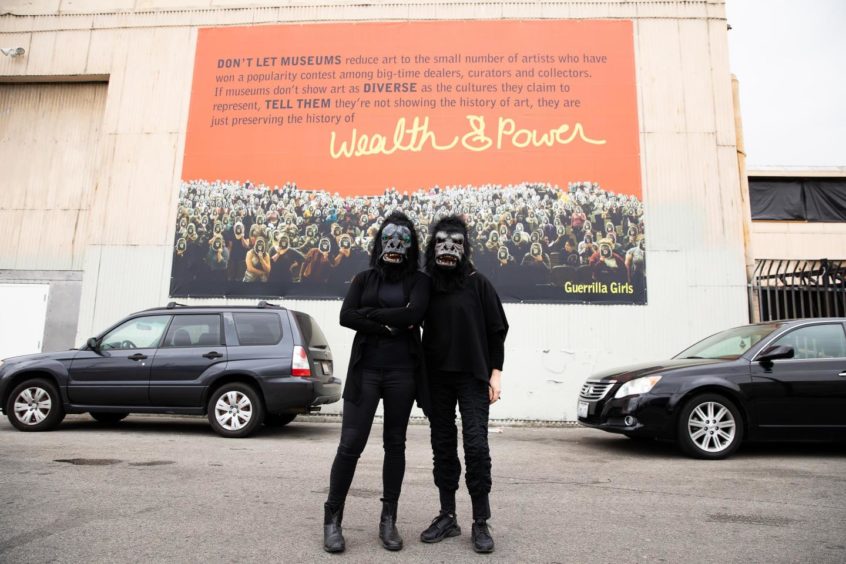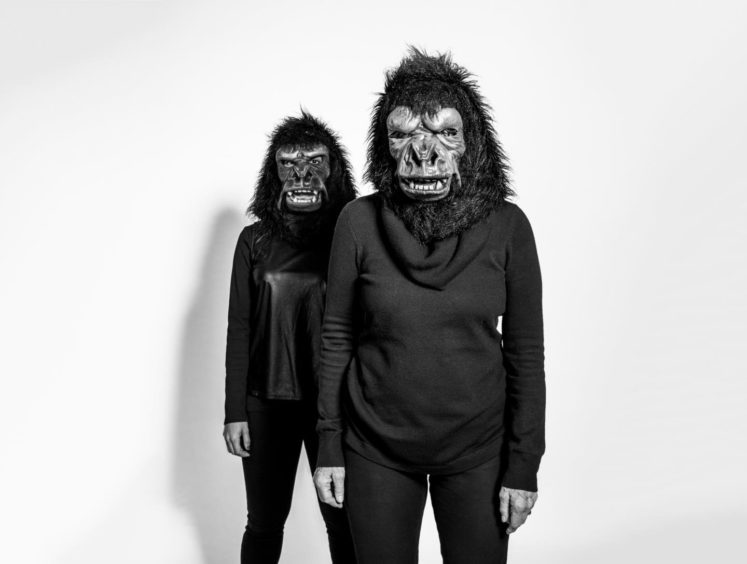When New York art activists the Guerrilla Girls formed in 1985 they were outraged at the lack of women artists represented in the world’s major galleries and museums.
Looking back, they must be amazed at the slow progress made over the intervening period, even if this makes their own work all the more relevant now.
The piece which arguably hammered home their argument most powerfully, and which they themselves have dubbed ‘the poster that changed it all’, was their 1989 creation that asked ‘do women have to be naked to get into the Met Museum?’
Their central point was made: there were more paintings and sculptures featuring images of naked women in New York’s Metropolitan Museum Of Art than there were exhibited artworks created by female artists.
And they had the stats to back it up: 5% of the artists in the Modern Art section were women, while 85% of the nudes on show were female. They’ve undertaken recounts since then, the most recent, in 2012, showed the numbers standing at, respectively, 4% and 76%.
“The Guerrilla Girls have a long standing activist practice that aims to change things and we need artists for whom creating change is at the heart of what they do,” says Lucy Byatt, Director of Hospitalfield.
“Through their activism they have brought to light the embedded inequalities in plain sight for women artists. I last saw them perform in Kochi in India and the impact of their direct, often humorous and reasoned approach was immediately exciting for the young women in the audience. It made them feel powerful and we need to empower our young women.”
As part of the UK-wide Art Night celebrations, the Guerrilla Girls presents The Male Graze project, which explores bad behaviour in the global art world, including by British artists and within UK art institutions.
The work will feature a dedicated website, a live gig, and a series of billboards, including one in Dundee.
Dundee Contemporary Arts are co-partners for this leg and DCA Director Beth Bate cites the group’s importance.
“Guerrilla Girls have long campaigned and created high-profile works that focus on the racist and sexist inequalities that exist in the art world, including in the collections that make up some of our many public institutions.
“At a time when the visibility of women in public spaces and the inequalities that affect so many in our society are in focus, Guerrilla Girls’ activism is more timely than ever. Our hope is that this project will invite us to consider how women are represented, how bodies of knowledge are formed and how history is shared, with the hope of a better, more equitable future.”
Girls are perfect for ‘She Town’
Meanwhile, Sophia Yadong Hao, Principal Curator of DJCAD’s Cooper Gallery insists that Dundee is the perfect location for the Guerrilla Girls to show off their wares.
“It is exciting to see this project coming to ‘She Town’ aka Dundee, a city with a proud history of a strong working women’s culture and feminist tradition.
“Adding an extra ‘r’ to the phrase ‘male gaze’ as coined by feminist film maker and theorist Laura Mulvey, the Guerrilla Girls’ Art Night commission will be an urgent anti-discriminative clarion call for the reassertion of women’s place not only in art and art history but also in society.”
Who are they? No one really knows…
But who are the Guerrilla Girls? Well, no one really knows and that’s just the way the collective likes it, insisting that making individuals the focus would shift the emphasis away from the campaign and hinder them from reaching their goals.
And so, the Guerrilla Girls wear gorilla masks and take the names of dead female artists (Frida Kahlo, Käthe Kollwitz, and Zubeida Agha, for example) as a means of remaining anonymous; though a trial judge in 2005 nearly upturned that aim by denying their request to wear masks in court.
“Their work to make the art world more inclusive aspires to a more democratic society,” says Dundee composer and producer Andrew Wasylyk.
“Vital sentiments for these days we live in that need as many voices as possible. As a composer working in the city, a fan of the Guerrilla Girls and a feminist, seeing how they use creative intervention will no doubt be inspiring. I look forward to learning more from them.”
- Art Night: Guerrilla Girls – The Male Graze, Friday 18 June–Sunday 18 July.


